I find it hard to understand why the architecture of Keble College has aroused such animosity. I pass it regularly on my route to the University Parks, and I love the audacity of its towering scale, the distinctive patterning of red, white and blue brickwork (polychromatic apparently to those in the know) today resplendent against a perfect azure sky. But back in 1870 when William Butterfield completed it, the building caused an uproar. Dismissed for ‘its unspeakable ugliness’, and ‘suggestive of a workhouse or county lunatic asylum’, it was described by its critics amongst other things as a ‘holy zebra’, ‘a lasagne’ and by John Ruskin, who took a circuitous journey to his work at The University Museum just to avoid catching sight of it, as ‘a dinosaur in a Fair-isle sweater’. Oscar Wilde once described Oxford as the most beautiful place in the world, “in spite of Keble College.”
But into the 20th century the criticism became less verbal and more physical. We’ve all heard of the Oxford college rivalries where the stealing of tortoises and lavatory rolls, the hurling of eggs and water bombs are expounded by tour guides as examples of student ‘jolly japes’. But ‘The Destroy Keble Society’ was on another level. Dreamed up by students from next door St John’s College, who felt personally affronted by what their new neighbour had just built on land once belonging to them, the aim was to dismantle the buildings brick by brick. Keble College students would wake at night to the noise of a gentle tapping outside their window, only to discover an undergraduate from St John’s armed with a chisel. For yearly membership was secured only by the presentation of a red brick. If you managed to chip out a rarer blue brick, a lifetime affiliation awaited.
In truth, this was all about snobbery. An unimaginative response from the conservative Oxford of the time, railing against a rapidly changing University where tutors could now marry, and God forbid, women were now tolerated – though they wouldn’t be awarded degrees until 1920. And now along came Butterfield, who had the audacity to build the first new college in Oxford for 150 years, not out of their much-loved honey coloured stone, but out of brick.
The bricks and design were central to Butterfield’s plan to create something that stood out, something new, something innovative that communicated the ideas and values of a system of beliefs to which he subscribed called The Oxford Movement. Initiated by the poet and clergyman John Keble, after which the college was posthumously named, it felt the Church of England had lost its way and preached a return to simpler times, when good honest faith, not money and privilege, were the principles we should live by. Butterfield believed that Keble College should be the manifestation of this, a place of education designed to be open to all, including the Jude the Obscures. It therefore needed to be economical. With Oxford running out of its building stone and the abolition of the brick tax in 1850, brick was now cheap and plentiful around the city. By 1891 there were 83 brickworking yards in and around Oxford. And with its choice of colours, intricate designs and patterns (the higher up and therefore the nearest to heaven the more ornate it got) could be created without ornament having to be added. The plan was for students for the first time, unconventionally for Oxford, to live on corridors not staircases, and to eat not in their rooms as had become the norm, but together in what became the largest hall in Oxford, bigger even than Christ Church. Students were charged a flat fee, and if extras exceeded £5 a term, they were told to try another college. This highly original vision, aimed at the time to educate young clergymen inexpensively for missionary work at the height of the British Empire, is still upheld in Keble’s motto, ‘Plain Living and High Thinking’.
It’s a shame Butterfield never lived to see Keble become an Oxford icon (it’s Grade 1 listed now) and to those of us who live nearby, a familiar friend on our forays out north of the city. In the end I do believe the college has had the last laugh. For the humble brick is celebrated in the name of the eponymous college student magazine, and a polystyrene version with KEBLE emblazoned along its side is given to every proud parting graduate student. Besides, when it comes to new building material, it’s now concrete that is the target for our disdain.
Taking a route home around the back of Keble, I discover painted on the west side of Blackall Road and facing St John’s College a piece of graffiti apparently dating back to the 1970’s. It’s a picture of an ancient reptile with the words ‘REMEMBER WHAT HAPPENED TO THE DINOSAUR’ written alongside. I am assuming this is a message that sticks two fingers up at the likes of the ‘Destroy Keble Society’. Gerard Manley Hopkins writing to Butterfield in 1877 said, “I hope you will long continue to work out your beautiful and original style. I do not think this generation will ever admire it’. That’s as maybe. But Butterfield always maintained he wanted to ‘give dignity to the brick’ and at last I think he has achieved it.
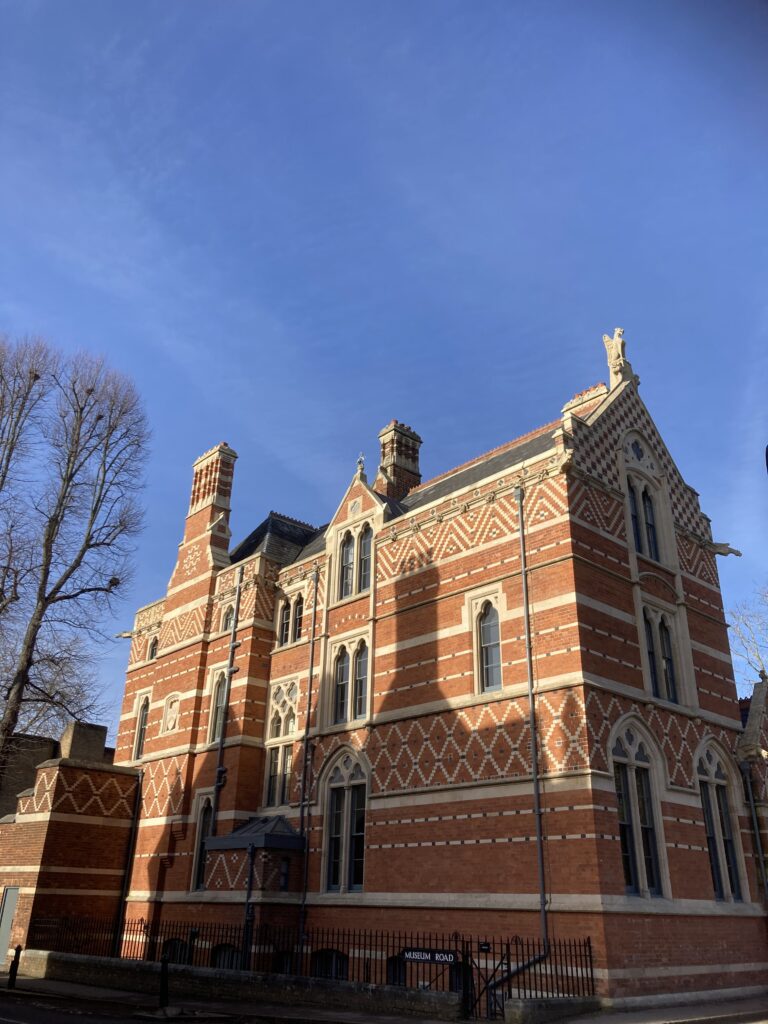
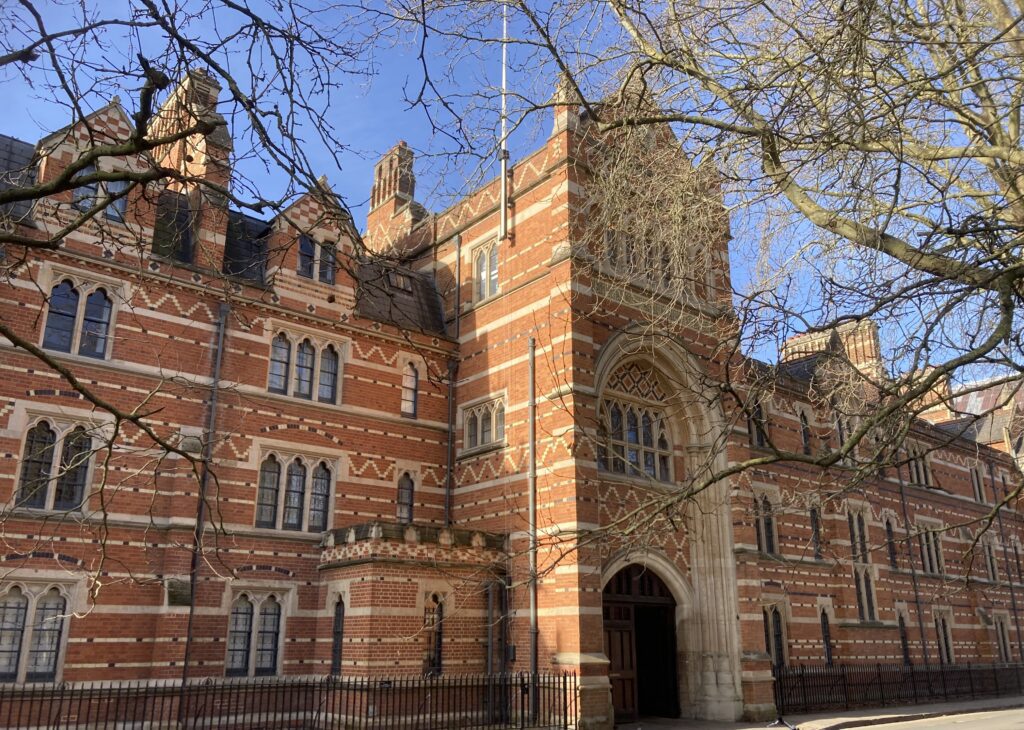
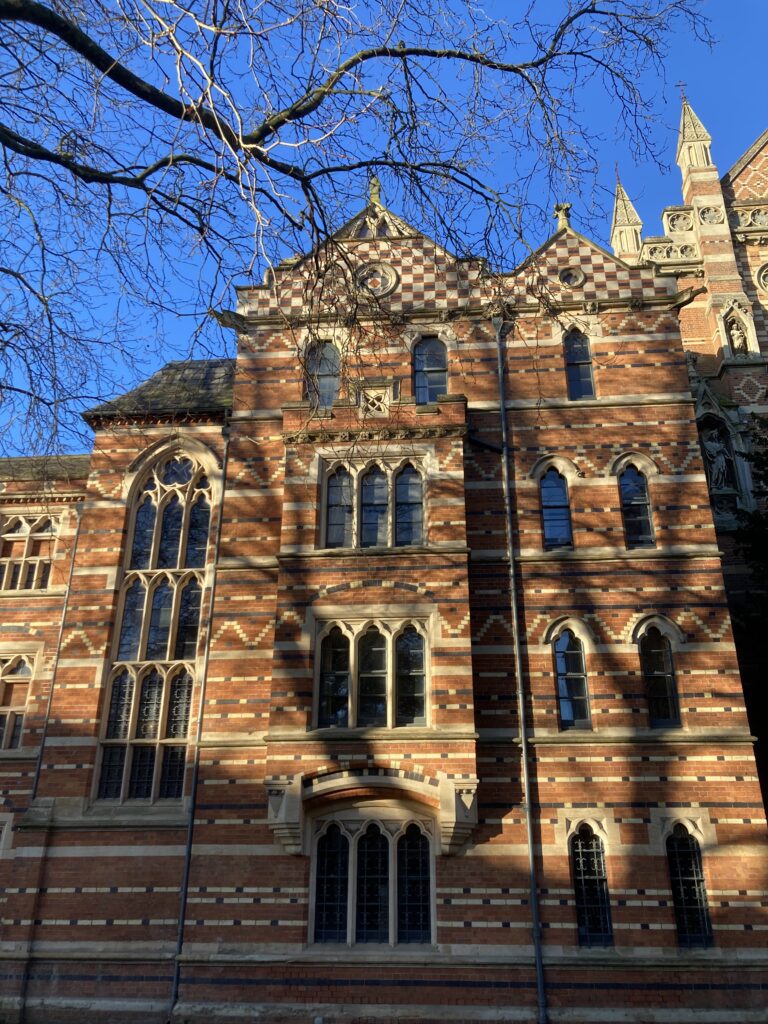
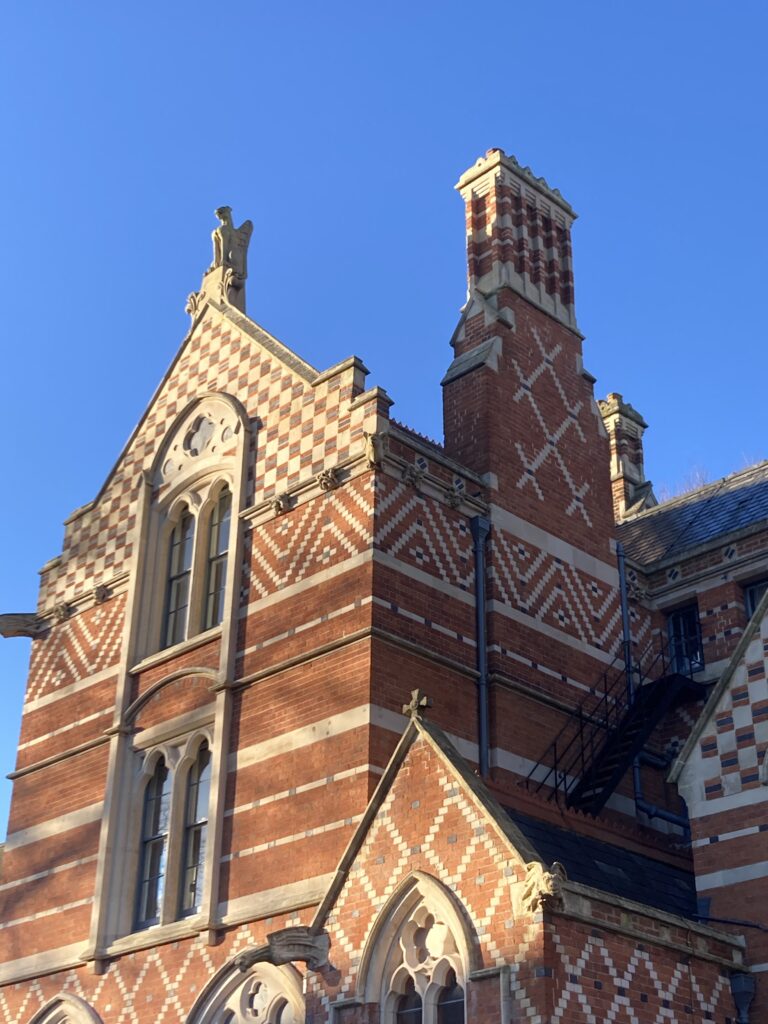
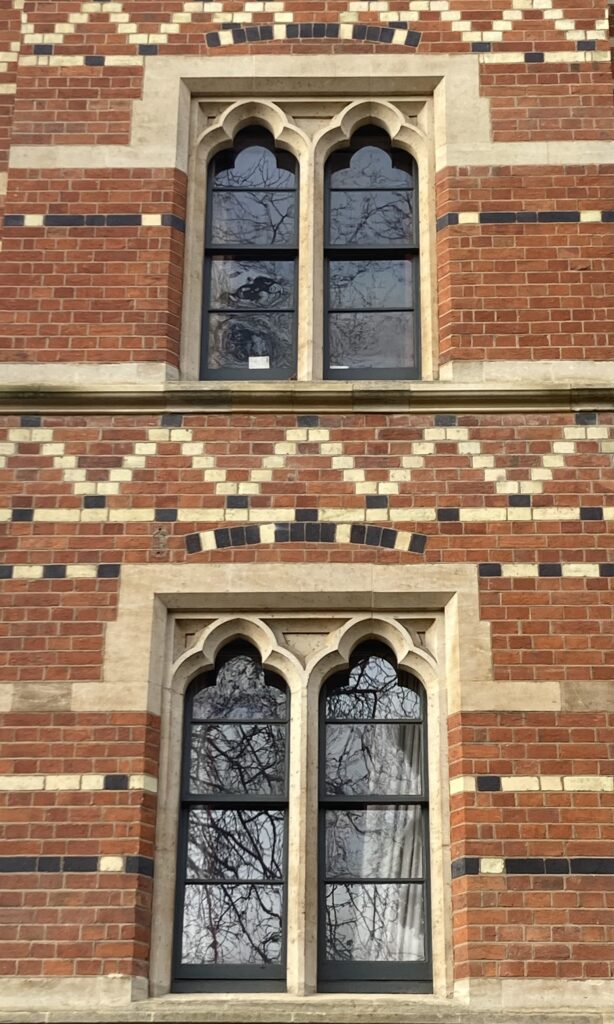
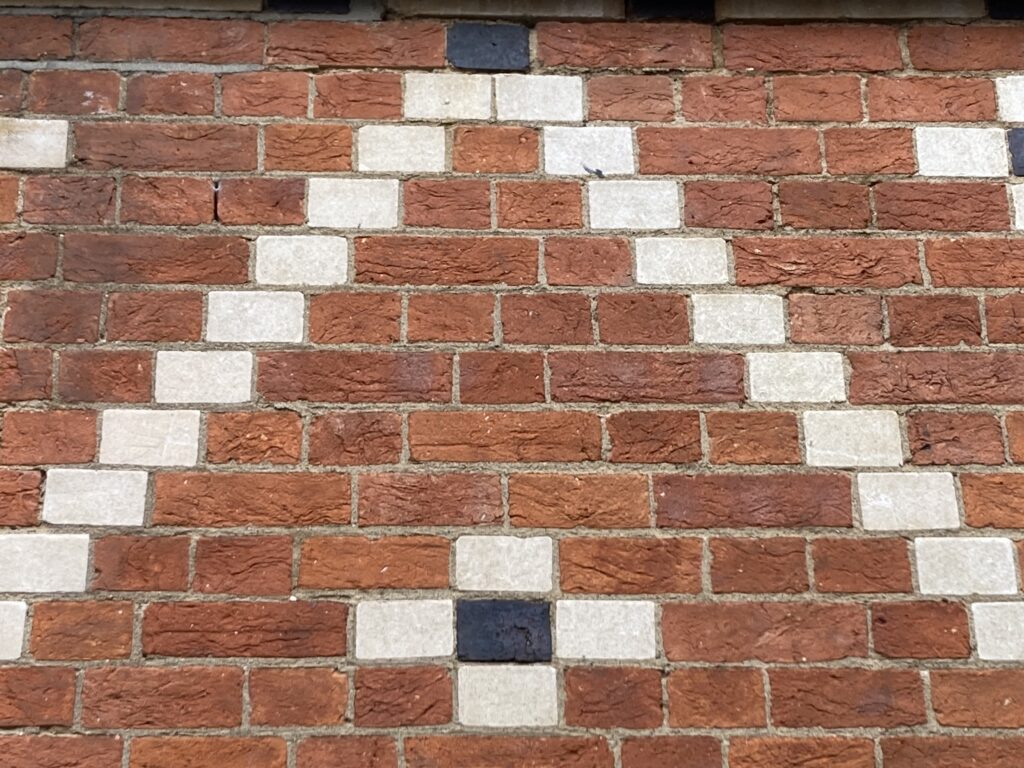
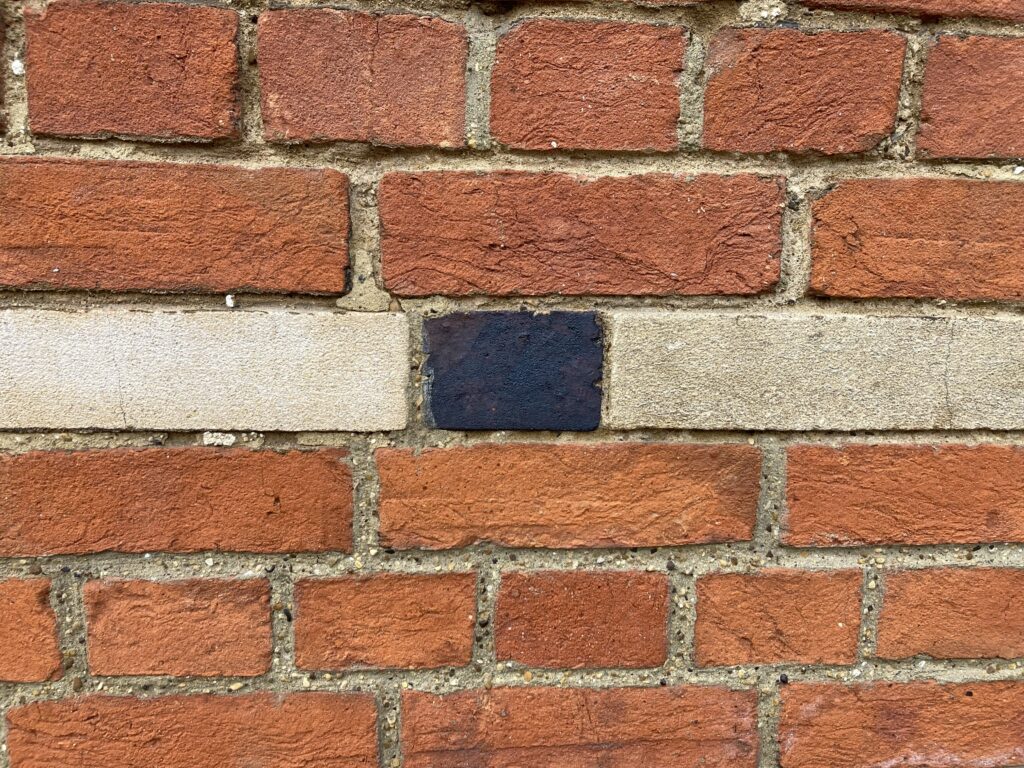
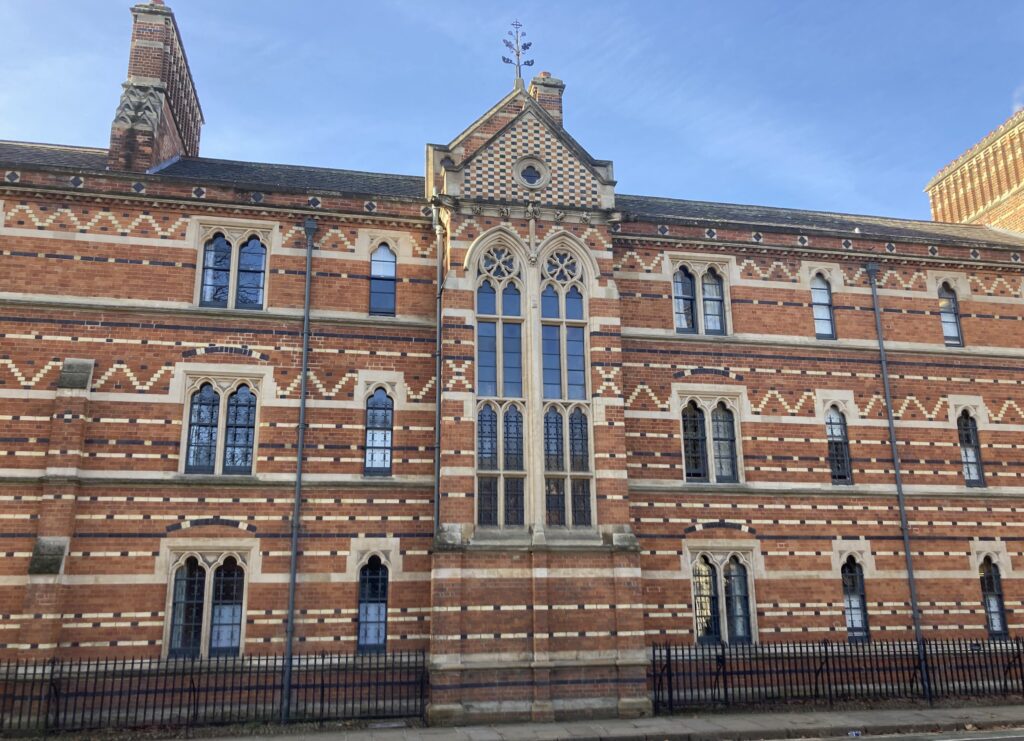
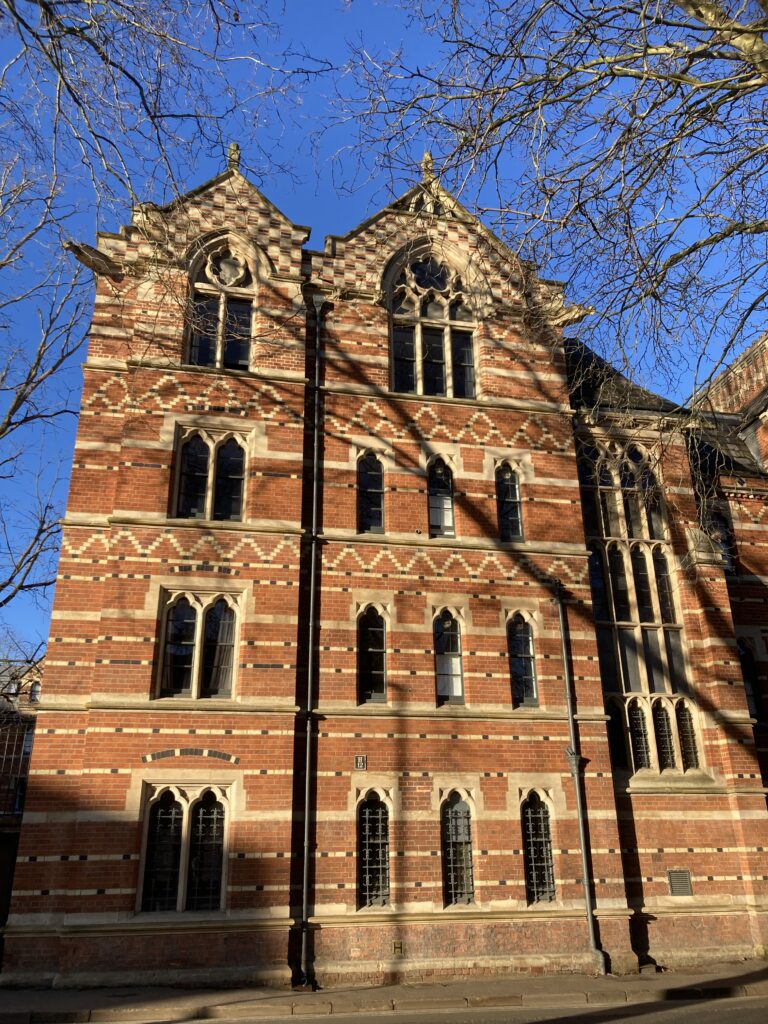
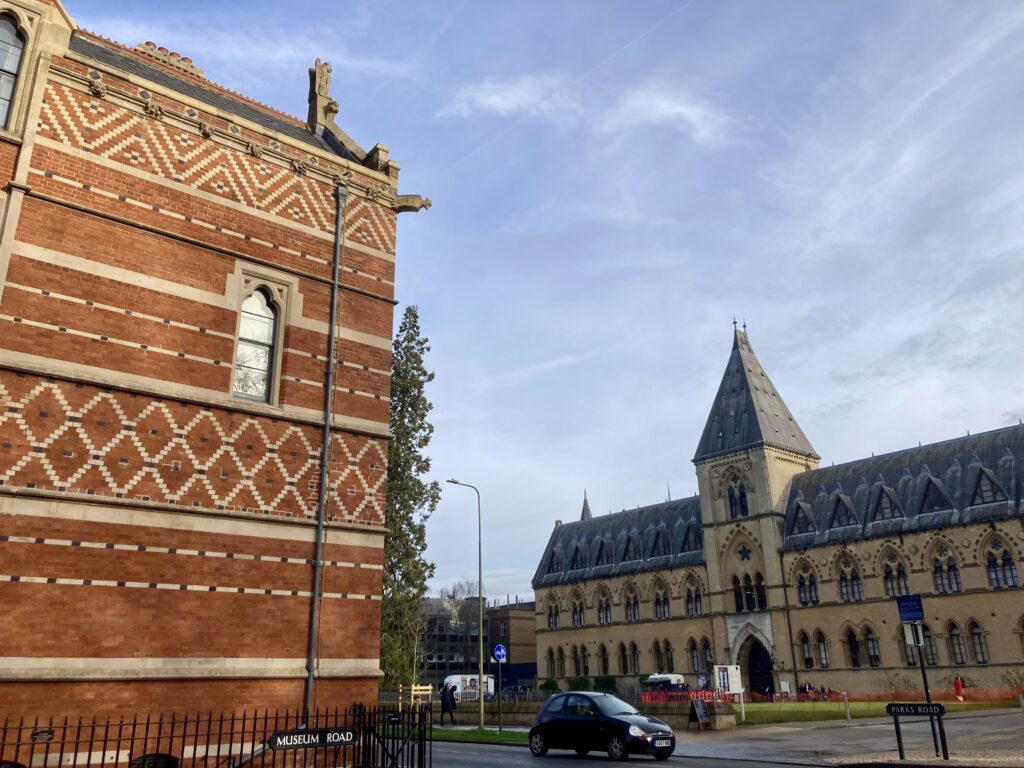
Keble lies opposite The University Museum of Natural History, built ten years earlier and itself revolutionary in its way. It did however use local stone not brick for its exterior.
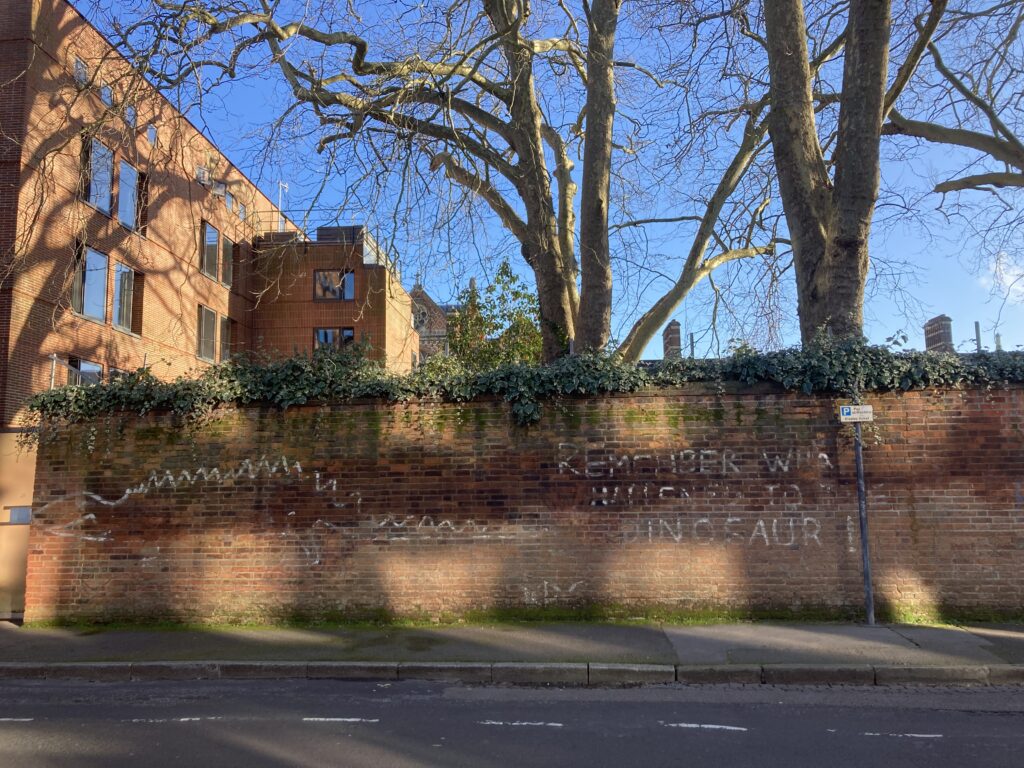
REMEMBER WHAT HAPPENED TO THE DINOSAUR! A lesson to naysayers like the Destroy Keble Society.
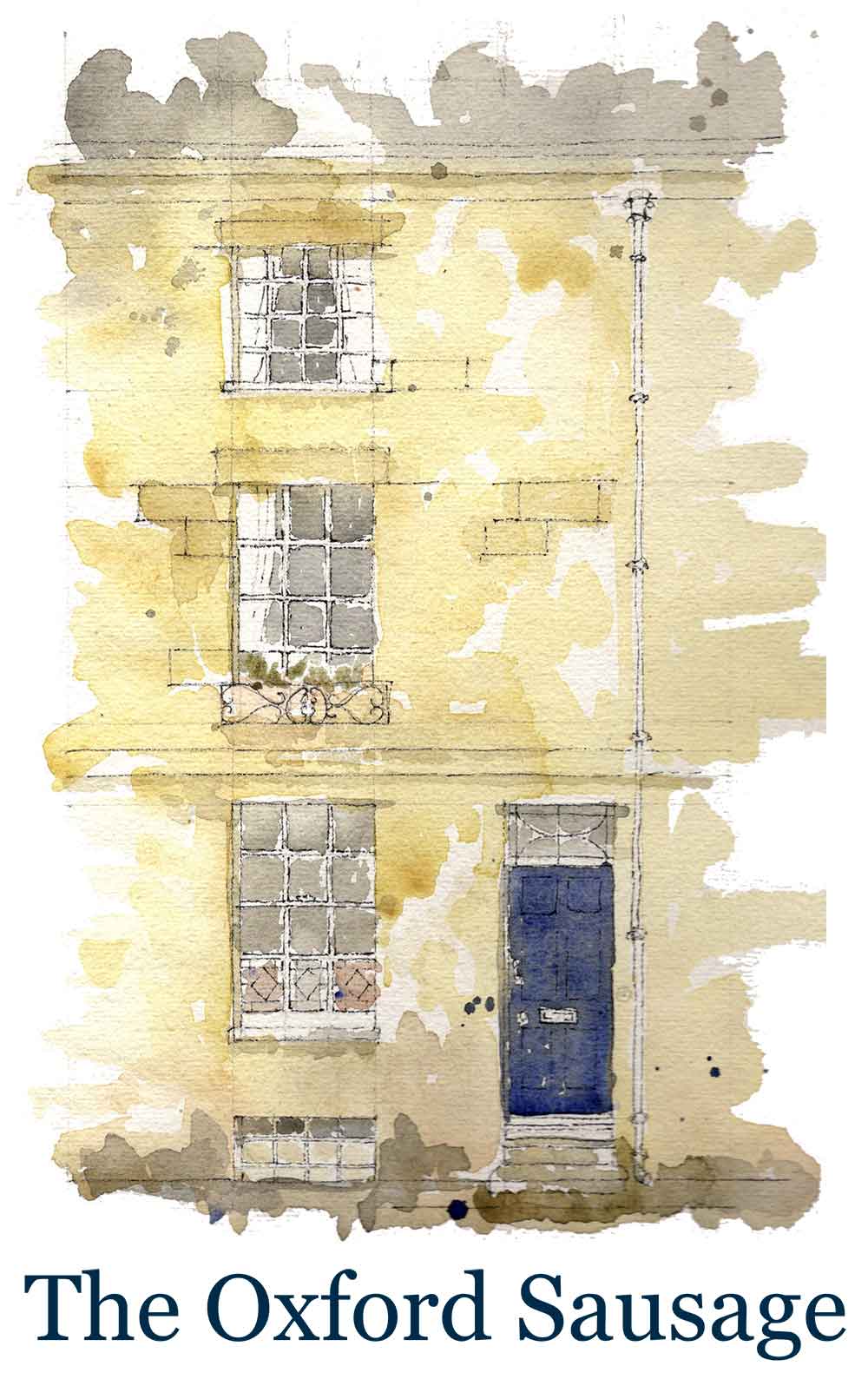
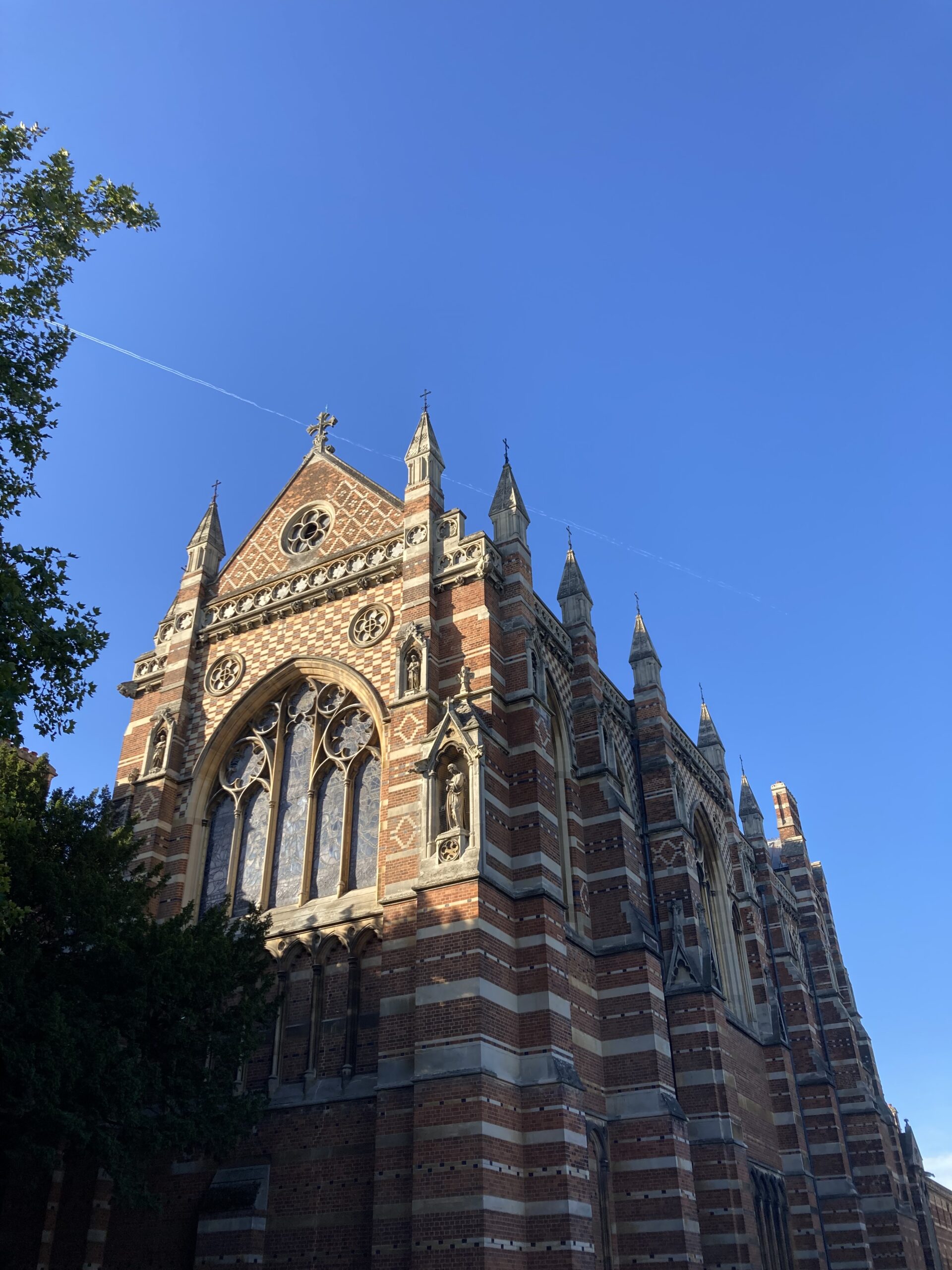
6 Comments
Join the discussion and tell us your opinion.
Wonderful article. I live in Emery Down where William Butterfield designed our church, Christ Church, completed in 1864. Elements of the design are similar but on a lesser scale.
It’s such a beautiful building. I love it.
Beautiful piece!
Excellent photos make this post a great reading experience … cheers!
Love Keble. The Chapel is stunning.
The original white dinosaur was already there when I first saw it in 1975. A couple of years later a blue copy appeared along the wall, but was not as well maintained. I am not sure exactly where that was, but it may have been on a section of wall lost when the ARCO bnuilding was put there.
Having had an office across the road from Keble for a long time I think the most annoying thing about the buildings is the occasional “dropped stitch” or pattern mistake in the brickwork; once seen, never ignorable.